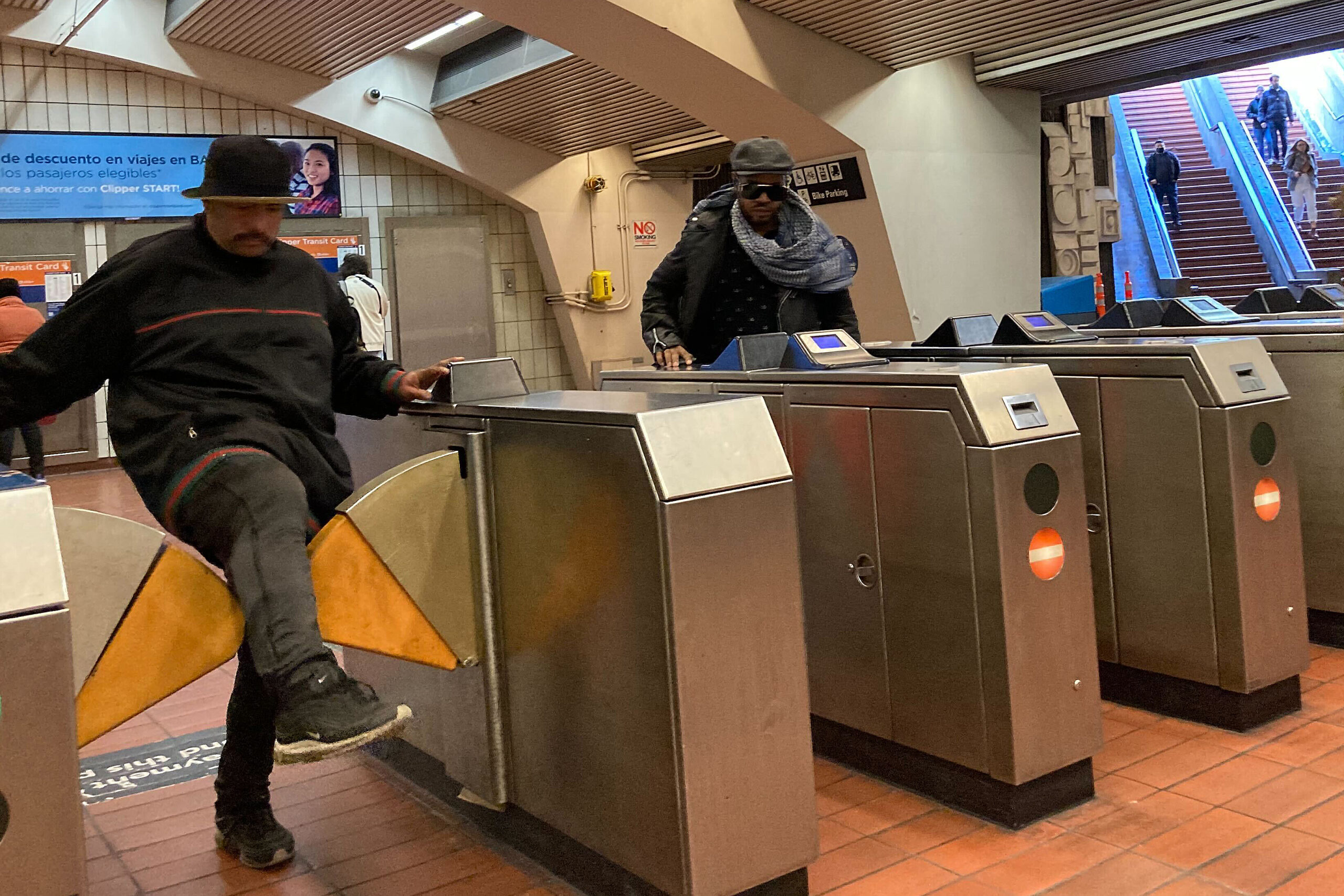A more visible security presence and stronger enforcement of conduct rules on BART could instill confidence among lapsed riders and boost ridership, according to the results of a new poll.
“There’s no question that BART is the big kahuna of the Bay Area’s mass transit system, and as BART goes, to some degree, the Bay Area goes,” said Jim Wunderman, CEO of the Bay Area Council, which commissioned the poll. “It’s rather starkly evident that people feel unsafe in the system.”
Ridership on BART has only recovered to about 40% of pre-pandemic levels, which—paired with the expiration of federal relief funding—puts the system on a collision course with a fiscal cliff expected in March 2025.
The EMC Research poll of 1,000 Bay Area residents found that safety and cleanliness were two major impediments to getting people back on BART.
Around 85% of BART riders who have reduced or eliminated their usage said they would ride the system more often if it was significantly cleaner and safer to ride. According to the poll, their top priorities include more frequent cleaning, making sure restrooms were in working order and ejecting people who violate BART’s code of conduct, which expressly prohibits drug use, fare evasion and vandalism.
A prior survey by BART showed growing dissatisfaction with the system: A 2022 ridership survey showed a 6% increase in those who were dissatisfied with BART’s service compared with a 2020 survey. The proportion of those reporting they were “very satisfied” dropped from 39% to 26%.
But BART’s surveys are limited to current riders, and done once every two years. Bay Area Council officials said the council conducted its poll in part to determine how to get formerly regular riders back on trains.
Lapsed riders rated BART highly on being easy to use, fast and convenient. Overall, a majority of respondents (64%) said they would prefer to take BART to their destination over driving if possible.
But respondents who had eliminated or reduced their usage reported that safety concerns and cleanliness were their biggest impediments to getting back on board. The group’s most negative ratings were on BART’s efforts to address homelessness, keep passengers safe from crime and violent behaviors and dealing with drinking and drug use on the system.
Alternatively, their lowest priority issues were adding a second Transbay tube and more fare inspectors.
“We’re in this post-pandemic era where people are making different choices today, and they have different options,” Wunderman said. “There’s a solution to the problem, which is to maximize the number of people who could use BART to use BART, and the answer is safety and cleanliness.”
Among all respondents, 53% said they know of someone who has been a victim of a crime on BART and 46% have personally witnessed a crime on the system.
Overall, 79% of respondents said they would feel more comfortable riding BART if there were a uniformed police officer or security guard on board. However, around one-third also said they didn’t trust BART police officers to treat all passengers fairly and equitably.
BART announced a plan to boost its uniformed police presence on trains and stations earlier this year in an effort to prevent disruptions and reassure riders that trains are safe. But the total number of officers on trains are still under 30. The survey was conducted after the plan for additional police was implemented.
“Listening to our riders, hearing their concerns, and taking action is at the core of what we do,” a BART spokesman said in a statement. “From the first day of the new deployment plan through April 16th, about a full month, the BART Police Department recorded a 38% decrease in calls for service and a 40% increase in arrests.”
BART also touted enhanced cleaning efforts, including employing eight teams that scrub cars while they are in overnight storage and the addition of four deep-cleaning teams who will focus on scrubbing stations.
The poll results have led the Bay Area Council to call for specific policy prescriptions, including the increase of police and security personnel on trains and strong enforcement of the customer code of conduct, which includes the removal of rule breakers and installation of new fare gates within a year.
The BART Board of Directors has approved an initial $47 million in funding for new fare gates, which are designed to be more difficult to circumvent, but it is likely to take until 2026 for all gates to be replaced.
A majority of respondents (65%) said BART should “only focus on running a clean, safe and reliable public transit system” as opposed to “connect[ing] people in crisis on their system to supportive services.”
Although BART officials agree that their primary role is operating a transit system, they also say they are not immune to larger regional issues with homelessness and drug addiction, which impact the rider experience. It’s a conundrum that urban transit agencies across the country are grappling with.
“I do not run a social service agency. I run trains,” Bob Powers, BART’s general manager, said in a February interview. “But I’ve got to do what I can to keep the rider experience as positive as I can, even if that means funding some [homeless outreach] teams, partnering with the counties to fund those teams or creating a progressive policing program.”
